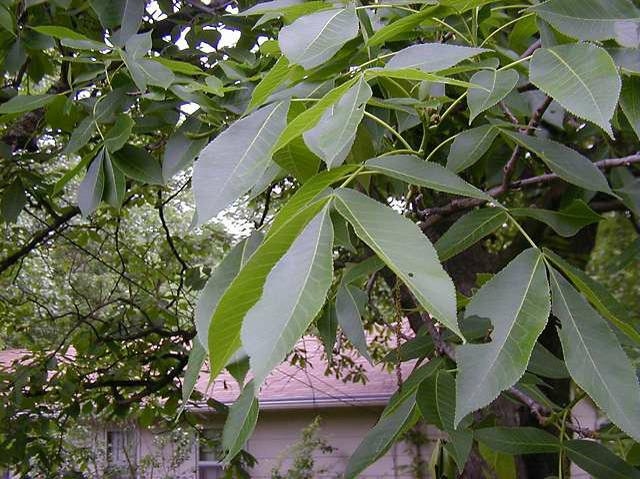Carya ovata: Shagbark Hickory
 Latin name: Carya ovata
Latin name: Carya ovata
Common name: Shagbark Hickory
Flowers: Not showy12
Fruit or cones: Showy, edible fruit12
Height & Width: 90’ x 70’16
Type: Deciduous16
Wetland indicator category** or ***: FACU+17
Habit: Upright 16
Texture: Coarse16
Growth rate: Slow16
Light: Full sun to part shade12
Moisture: Medium12
Soil*: Prefers loam, tolerates clay12
Zones: 4-812
Origin: South Carolina and the eastern United States16
Features: Shagbark Hickories get their name from the peeling off of long strips of bark from their trunk with age. Along with this interesting feature the fruit is an edible nut that the Native Americans heavily relied on for food and today is sold commercially. The leaves are compound and turn yellow before falling in the fall. Small inconspicuous flowers appear in April.12
Siting: A large area with plenty of room for a deep taproot. Although it can tolerate clay soils, it prefers well drained organically rich loam. Considered a shade giving tree, it is ideally located where this trait can be taken advantage of.12
Care: Plant so root flare is visible at soil surface14. At planting, water the root ball daily with two gallons of water per inch of trunk diameter for two weeks, every other day for two months and then weekly until established. Modify water recommendations to reflect site drainage and rainfall. Apply 3” of mulch over the planted area. Do not allow mulch to touch the trunk.14
Pests: Plants are relatively pest resistant if cultural preferences are met. The hickory bark beetle, pecan weevil and twig girdler have been known to infest in isolated areas.12
Author: Alexander Smolka
Sources 1-18 found on Sources page
